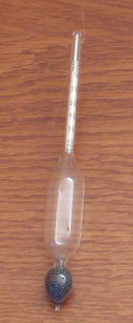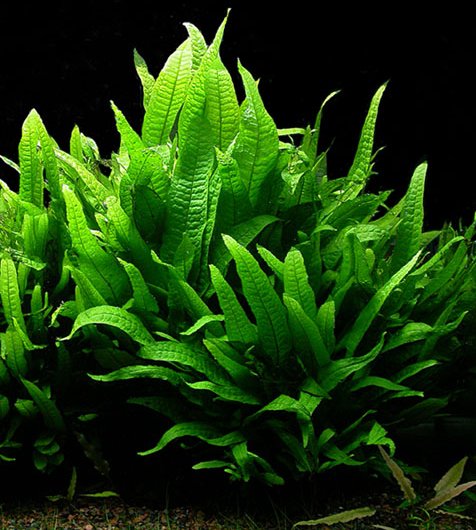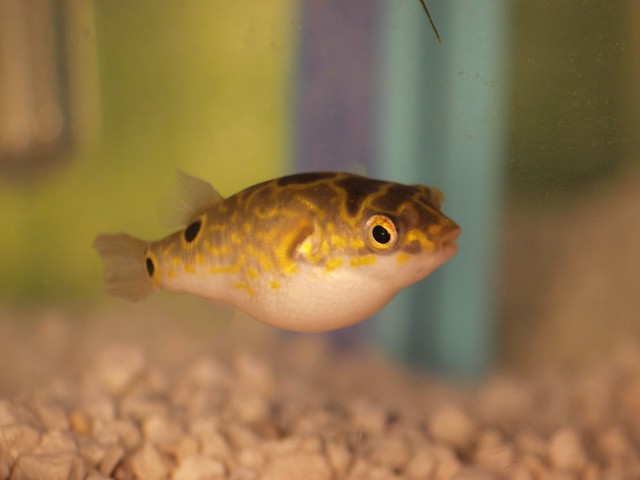It's time to end that myth! Brackish aquariums are definitely not as hard to set up and maintain as many people think, and, like with freshwater tanks, the possibilities are endless! There are many different fish that can be kept in brackish aquariums, so there's always a species for you. However, before we get into choosing a stock, let's learn some more about brackish aquariums and smash some more myths along the way, shall we?
What is brackish water?
Water with a salt grade between fresh and marine is called brackish. This naturally occurs in places where rivers meet the sea, like estuaries. Because the salinity in these places fluctuates with the tides, the water can go from almost fresh to seawater in a few hours time and change back just as quickly. One of the most well-known examples of a brackish habitat are mangrove forests, which is where a lot of our favourite brackish fish species actually come from.
 |
| Mangrove from Queensland Australia (public domain) |
Brackish water is usually divided into three categories:
Low-end brackish: salinity between 1.001 and 1.008
Mid-end brackish: salinity between 1.009 and 1.0015
High-end brackish: salinity between 1.0016 and 1.022
Water with a salt grade of 1.023+ is considered marine. These categories can help us determine more easily which fish are suitable.
What do I need to start a brackish aquarium?
 |
| Hydrometer (public domain) |
How do I make brackish water?
Making brackish water is actually very easy; you just need water and marine aquarium salt. Some sites will tell you table salt is fine too, but table salt often contains iodine and anti caking agents, which can hurt your fish. Even “pure” salt, which is just NaCl and nothing else (and therefore often used for salt baths), isn't suitable – it doesn't contain the trace elements needed for a healthy aquarium and healthy fish. Marine aquarium salt is the way to go! To determine how much salt you need for a certain salinity easy, try one of the many online calculators so you don't have to figure it out yourself.
Actually 'making' brackish water should always be done outside the aquarium! If you just toss the salt in, you can't spot possible mistakes beforehand, which can result in a lot of extra work. Fish can also be burned when they try to eat salt grains, so always premix salt and water. To do this, fill a bucket (or multiple buckets) with the amount of water and salt you need. Using warm water will help the salt dissolve more easily, and if an airstone is also added you can just leave the buckets for a few hours – you'll find the salt has dissolved when you come back. Test whether the water temperature and salinity are correct (when doing a water change, the new water should be of the same salinity as the rest of the tank), add water conditioner if needed and voila! You have your brackish water.
How do I cycle a brackish aquarium?
Just like you would cycle a normal one! The salt can slow down the cycling process a bit, but if you use a liquid test kit to keep a close eye on the water parameters determining when fish can be added should be easy.
Converting an existing freshwater aquarium to a brackish one is also possible. Just take out any fish and plants that won't be able to survive in brackish water and increase the salinity of the tank with 0.002 every two weeks. Because the transition to brackish will be very slow, the beneficial bacteria in the filter have time to adjust and the cycle won't be damaged – increasing the salinity too quickly can cause ammonia or nitrite spikes.
If you find yourself with a brackish fish in your freshwater aquarium because you impulse bought or were misinformed, don't worry! You can set up a new aquarium fairly quickly and easily. If you fill up the new aquarium with fresh water, you can quick-cycle it by putting used filter media from another tank in the new filter. Move your brackish fish to the new (and now hopefully cycled) aquarium and closely monitor the water values for a week to see if they're stable – another week in fresh water should not be a problem for the fish. If you are sure the aquarium is cycled, you can start increasing the salinity very slowly until it's where it should be.
How do I decorate a brackish aquarium?
 |
| Java fern Microsorum pteropus (public domain) |
But what about those high-end brackish aquariums? Even for those, there are many interesting aquascaping options. If you're in for a challenge, try sea grass – if you're not, or don't like the look of it, go for an interesting hardscape, silk plants, driftwood or artificial ornaments. You don't always need real plants to make a beautiful scape. Think out of the box!
So brackish aquariums aren't all that difficult to set up after all. But what about stocking them?
To make stocking your brackish aquarium easier, I have included a few of the less obvious species that tolerate or require brackish water – we all know about Monos and Scats, but have you ever considered these other fish and invertebrates for your brackish tank?
Figure 8 Puffer, Tetraodon biocellatus – contrary to what a lot of websites and pet stores say, the F8 Puffer is definitely not a freshwater fish, nor is it suitable for community tanks. If you've fallen in love with the F8's expressive face and interesting behaviour, be sure to set up a proper tank before you get one or you might not get to enjoy it for very long. Figure 8 Puffers can be kept in pairs when smaller, but get more aggressive as they age and should ideally be kept alone or with a select few tank mates. One F8 can live in a 20 gallon aquarium, as long as it's provided with heavy filtration and plenty of interesting plants, rocks and decorations to keep it entertained. The salt grade should be at 1.004-1.008 when the puffer is younger, but as it ages it should be increased to mid-end brackish: 1.009-1.015. To keep the teeth from overgrowing, feed your Figure 8 a varied diet of snails, crayfish, frozen/live shrimp, mussels and oysters.
 |
| Figure 8 puffer (jennifer.whiteford @ flickr) |
Red Claw Crab, Sesarma Bidens – even though they are often kept in freshwater aquariums, these guys actually need brackish water and access to land, making a paludarium of at least 15 gallons with a salinity of around 1.005 in the aquatic part a much better home for them. Red Claw Crabs are omnivores, and will enjoy an varied diet consisting of peas, algae tablets, blood worms, zucchini, mosquito larvae and leafy greens. Be sure to eliminate any escape options, as these crabs love to go exploring and will try to crawl out of their tank – the holes for cables to go through should be as small as possible and the aquarium should be sealed. You don't want to spend your afternoon with a flashlight in your hands searching for a crab behind furniture!
 |
| Male and female red claw crab (badmanstropicalfish.com) |
Knight Goby, Stigmatogobius sadanundio – although there is still much discussion on the salinity this interesting fish should be kept at, something between 1.004 and 1.007 is usually recommended. A 20 gallon aquarium with a sand bottom and some hiding places is enough for a small group – the Gobies will establish and defend their own territories and might eat smaller tankmates, so be sure to only keep them with medium-sized and larger fish! Knight Gobies will accept dried fish foods, but they prefer a diet consisting of live and frozen foods and a small amount of vegetable matter.
 |
| Knight goby (badmanstropicalfish.com) |
Molly, Poecilia sphenops – yet another brackish water fish that is marketed as suitable for small freshwater aquariums, Mollies can actually survive in full marine setups and prefer a salt grade of at least around 1.004. Keeping them in an aquarium under 30 gallons can cause problems, as these active livebearers actually get quite large and like to live in groups of at least three. If you maintain mixed-sex groups, make sure there are at least 2 females for every male as males will constantly pursue females.
 |
| Captive-bred form of black molly (Marrabbio @ wikipedia) |
Virgin nerite snail, Neritina virginea – if you're looking for an algae clean up crew for your brackish aquarium, look no further! These nerites do great in water with a salinity from 1.005 to 1.020+, and will do a great job at helping to keep the aquarium glass clear and clean without touching any plants. As long as you remember to feed your nerites some extra algae tabs when their regular food source runs out, they can be very useful and a pleasure to watch.
 |
| Virgin nerite shells (wikipedia) |
Bumblebee goby, Brachygobius xanthozonus, Brachygobius nunus – Bumblebee gobies are one of the most interesting fish species to keep in a brackish aquarium, but they can also be quite the challenge because of their pickiness when it comes to food. They will not accept normal, dried fish foods and will have trouble getting enough to eat in a regular community tank – go for an aquarium with a limited amount of tankmates and target feed your Bumblebee gobies with frozen foods like bloodworms and mosquito larvae. The fact that they are territorial and can frequently be seen having little arguments over the best spots does not mean these gobies should be kept alone; keep 5 or more of them to keep them happy, preferably in an aquarium of at least 15 gallons with lots of hiding places, at a salinity up to around 1.007.
 |
| B. nanus (tropicalfishkeeping.com) |
Hawaiian red shrimp, Halocaridina rubra – if you're looking for some inhabitants for your brackish nano tank, look no further! Naturally found in small, brackish pools near the beach, these small shrimp prefer an aquarium with lots of dark hiding places – lava stone is often used for this, as it mimics their natural habitat. They can adapt to a very wide range of salinities, so anything between 1.005-1.015 should be fine for them. When it comes to aquarium size, Hawaiian red shrimp aren't very demanding at all – a 5 gallon should be enough for a group. Feed your Hawaiian red shrimp with high quality algae wafers, freeze dried fish food and flakes and keep them in an aquarium with high water quality and they might actually live for up to 10 years!
 |
| Hawaiian red shrimp (www.petshrimp.com) |
Indian mudskipper, Periophthalmus novemradiatus – Indian mudskippers are some of the the smallest mudskippers available in the aquarium trade, but they can still be quite a handful! They can actually walk and need access to land, making a paludarium the best choice if you want to keep them. Go for a tank of at least around 25 gallons for three mudksippers, with one or more large sand/mud island(s) for them to establish a territorium on. Be sure to eliminate any escape options, because these fish can actually climb up the glass and crawl through small holes! To ensure their health, keep your Indian mudskippers at a salinity between 1.005 and 1.015 and at a humidity of at least 60%. Feed them a varied carnivorous diet consisting of live insects like crickets and mealworms and frozen/live brine shrimp, bloodworms and shrimp.
Possible Stocking Options
I have also included a few possible ways to stock brackish aquariums of a certain size with the fish and invertebrates mentioned earlier. Remember not to just get these fish though, do your own research to figure out how to give them the best possible care. All of these stocks require a filtered, heated tank with ammonia and nitrites at 0 and a stable pH.
5 gallon aquarium
20 x Hawaiian red shrimp, Halocaridina rubra
4 x Virgin nerite snail, Neritina virginea
20 gallon aquarium
1x Figure 8 Puffer, Tetraodon biocellatus
8-10x Bumblebee goby, Brachygobius xanthozonus, Brachygobius nunus
(Bumblebee gobies are one of the only fish suitable as tankmates for a Figure 8)
55 gallon aquarium
3x Indian mudskipper, Periophthalmus novemradiatus
6-8x Molly, Poecilia sphenops
5x Virgin nerite snail, Neritina virginea
(Note that the mollies should have at least 25-30 gallons of swimming space, and the mudskippers need an island of about 12”x12”)
Now that you know how easy it is to set up a brackish aquarium, I hope you've been inspired to consider setting one up yourself! I'll be setting up mine soon too - it will be called home by a Figure 8 Puffer and a small group of Bumblebee gobies.
Happy fishkeeping!
xoxo, Mari, admin of Aquariadise.
Thank you for letting me write a guest post for your blog! It was a lot of fun :)
ReplyDeleteInformative post !!! there is quality and good content that every reader wants in a post !! well done !!
ReplyDeleteI am impressed by the way you execute the post !!! it is clear, precise and straight to the point !!! keep up the good work!
ReplyDeleteI’ve never really known anyone who is maintaining a brackish water aquarium. It’s either freshwater or saltwater. I’m not sure on the diversity of marine life you can also have.
ReplyDeleteHello Fish Girl, good day, I want to submit guest post, thanks
ReplyDelete